Four decades after Mayor Dianne Feinstein laid out a vision for San Francisco’s “Champs-Élysées,” the Van Ness Bus Rapid Transit (BRT) (opens in new tab) will roll down its red lanes and pick up its first passengers today, despite dramatic delays and cost overruns.
Renamed after the city’s seventh mayor in 1856, Van Ness Avenue is sometimes called the city’s “spine,” and as such, has reflected the city’s stature over time: Its Victorian mansions were dynamited as a firebreak to stop the 1906 earthquake fire. Its new City Hall rose in time to greet Panama Pacific Exhibition visitors in 1916. And its Art Deco “Auto Row” showrooms sold personal transport at the expense of its streetcars until a tech-driven 1990s population boom pushed the need for a traffic solution to voters.

The opening of the Van Ness BRT project realizes the transportation portion of late-20th century urban planning dreams. Unfortunately, it has also become a case study in municipal transportation construction nightmares. Read on for the backstory on how building a two-mile bus line can add up to a decades-long, $346 million-dollar saga.
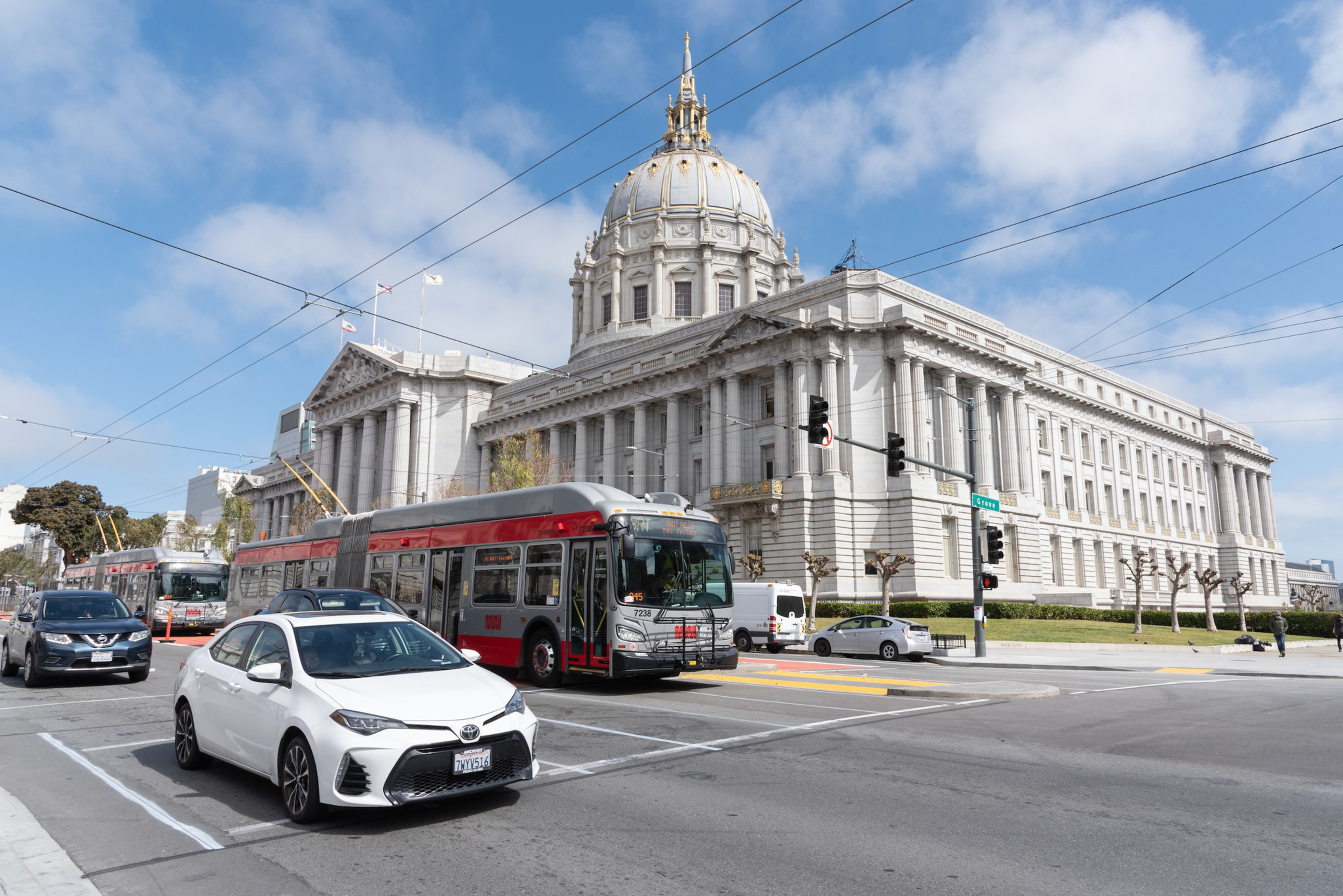
A Timeline of the Van Ness BRT Project
1981 – Feinstein Eyes Van Ness as SF’s own Champs-Élysées
As one of six SF areas targeted for rezoning for residential expansion, then Mayor Dianne Feinstein envisioned Van Ness Avenue to be a local Champs-Élysées (opens in new tab), “a stylish retail and residential boulevard” with residential dwellings atop ground-floor restaurants and retail stores.

1988 – SF City Planning Adopts Van Ness Special Use District (SUD)
This zoning implementation (opens in new tab) aimed to enhance the avenue with residential units atop street-level retail. The Van Ness SUD changed the parking requirement to one space for every unit.
1990s – Need for Transportation Improvements on Van Ness Recognized
The San Francisco County Transportation Authority (SFCTA) and Muni recognize the need to establish a rapid transit service (opens in new tab) to run along Van Ness Avenue, making public transportation in the corridor more reliable and readily available.
1995 – Origin of the Van Ness Project
The Van Ness Project was one part of the original 1995 Four Corridors Plan (opens in new tab) created by the San Francisco County Transportation Authority Commission. The Four Corridors included Bayshore, Geary, North Beach and Van Ness.
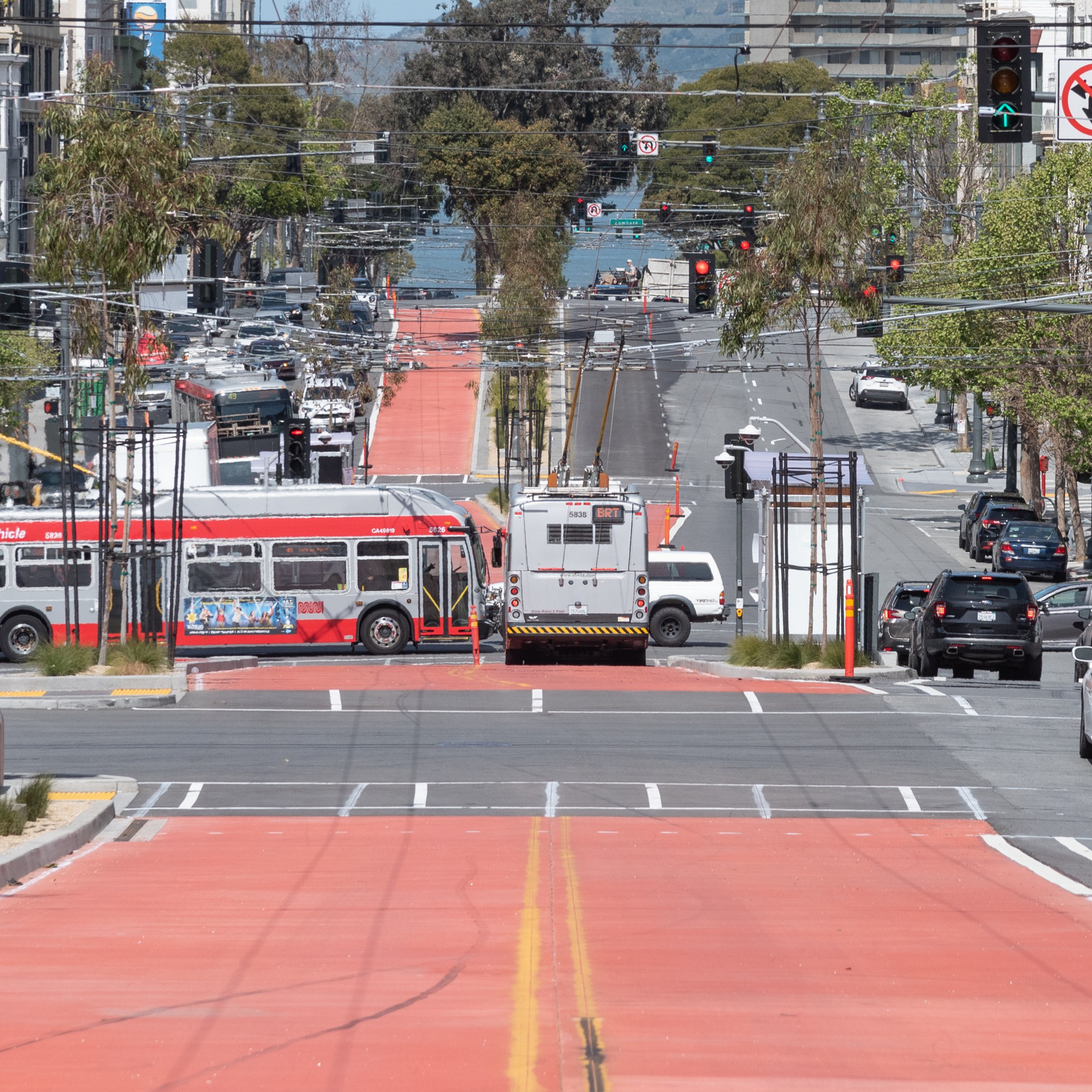
2001 – Bus Rapid Transit Studied
San Francisco city planners first studied the BRT concept (opens in new tab) in 2001 initially as a rail line system to “unite” the city and “expand its horizons.”
2003 – Proposition K Gives Green Light
After passage of Proposition K, with 75% of voter approval (opens in new tab) of a half-cent sales tax to plan rapid transit service on Van Ness Avenue, the SFMTA began formal planning for the project. Project funding came from FTA Small Starts, San Francisco Prop K funds and developer contributions.
2006 – Feasibility Study Completed
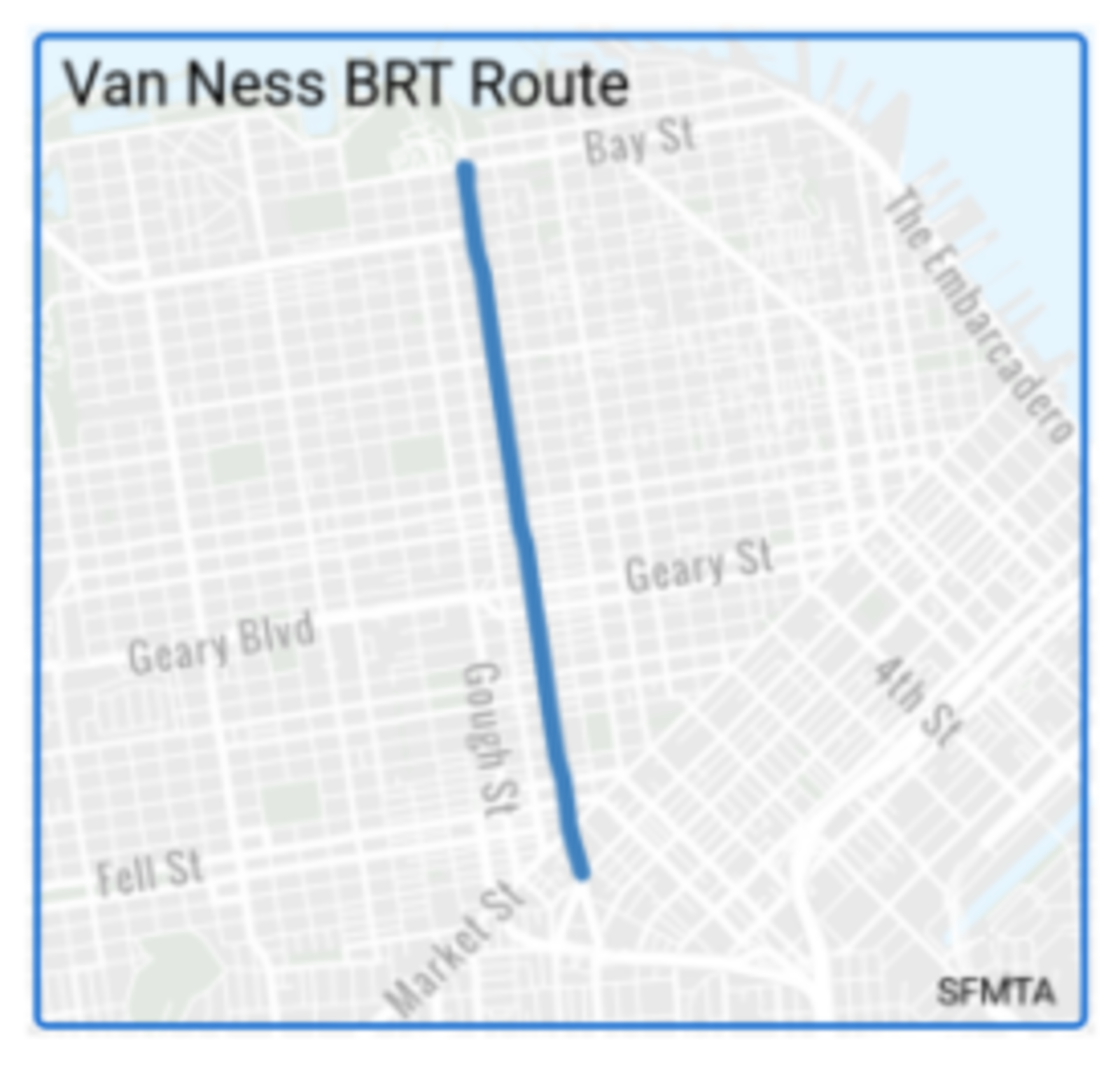
SFMTA took official control of the project and completed its feasibility study in 2006. The Feasibility Study (opens in new tab) references the 2004 Countywide Transportation Plan (CWTPP) that emphasized the importance of “retaining and expanding transit ridership citywide.” Unfortunately, the study did not adequately investigate the accuracy of utility maps and underground sewer lines, which led to significant delays during construction.
2011- Environmental Impact & Public Review
An Environmental Impact Report (opens in new tab) was drafted and design options were circulated for public review and opinion during a seven-week period.
September 2013 – Project Approval
The Board of Supervisors unanimously approved (opens in new tab) the Van Ness Bus Rapid Transit Project. The project received final approval and environmental certification (opens in new tab) from the Federal Transit Administration on December 20, 2013.

December 2016 – Construction Begins
After two decades in incubation, the Van Ness Improvement Project breaks ground (opens in new tab) with, in hindsight, an optimistic projected completion date of October 2019. The Obama administration awarded San Francisco $75 million for the project (opens in new tab) from the U.S. Department of Transportation’s Federal Transit Administration.
October 2017 – Underground Construction Begins
Immediately after breaking ground, construction delays began (opens in new tab). Existing maps of old gas, water and sewer lines flowing beneath the center of Van Ness Avenue proved inaccurate, slowing excavation and causing the city to bring in utility contractors. The utility placement also made the BRT’s center-lane design a challenge: (opens in new tab) Any future sewer and water repairs would disable bussing for the duration of repair. Plus, overhead bus electrical wires would need to be fully removed for the safety of the crews. Water and sewer infrastructure needed to be moved to the outside lanes to keep the center-lane BRT design — deemed the best for traffic flow.
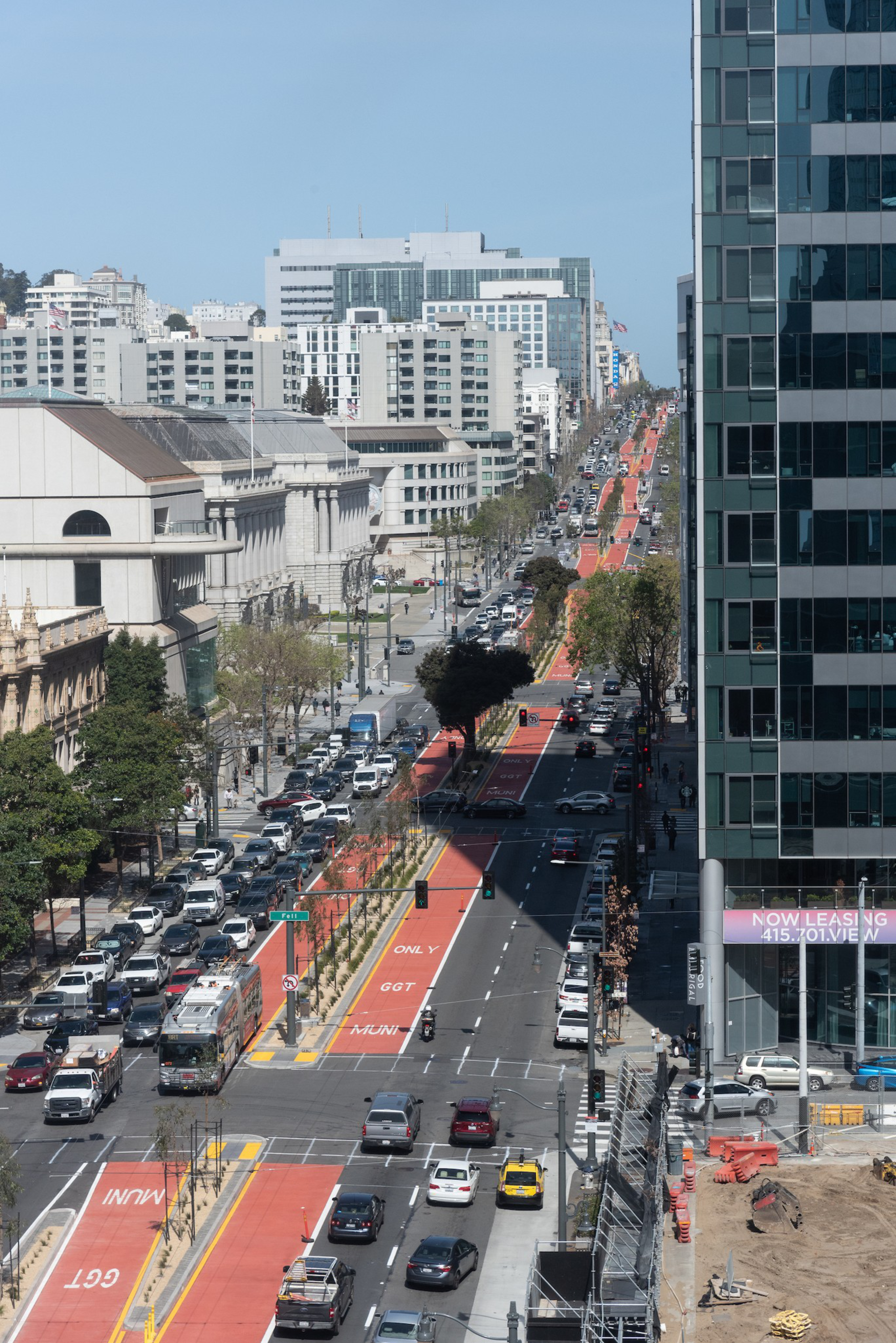
April 2018 – Contractor Files Lawsuit against SFMTA
Walsh Construction Co. filed three claims (opens in new tab) against SFMTA for $21.6 million to avoid paying a $50,000-per-day penalty for construction delays caused by the city’s search for a utility subcontractor to deal with the unexpected underground infrastructure work.
September 2018 – Underground Gusher
Work crews hit an unmapped water pipe (opens in new tab) encased in tree roots at Van Ness and Filbert, creating an underground river beneath the road.
October 2019 – Original Completion Date
Construction is still in full swing as the projected completion date comes and goes.
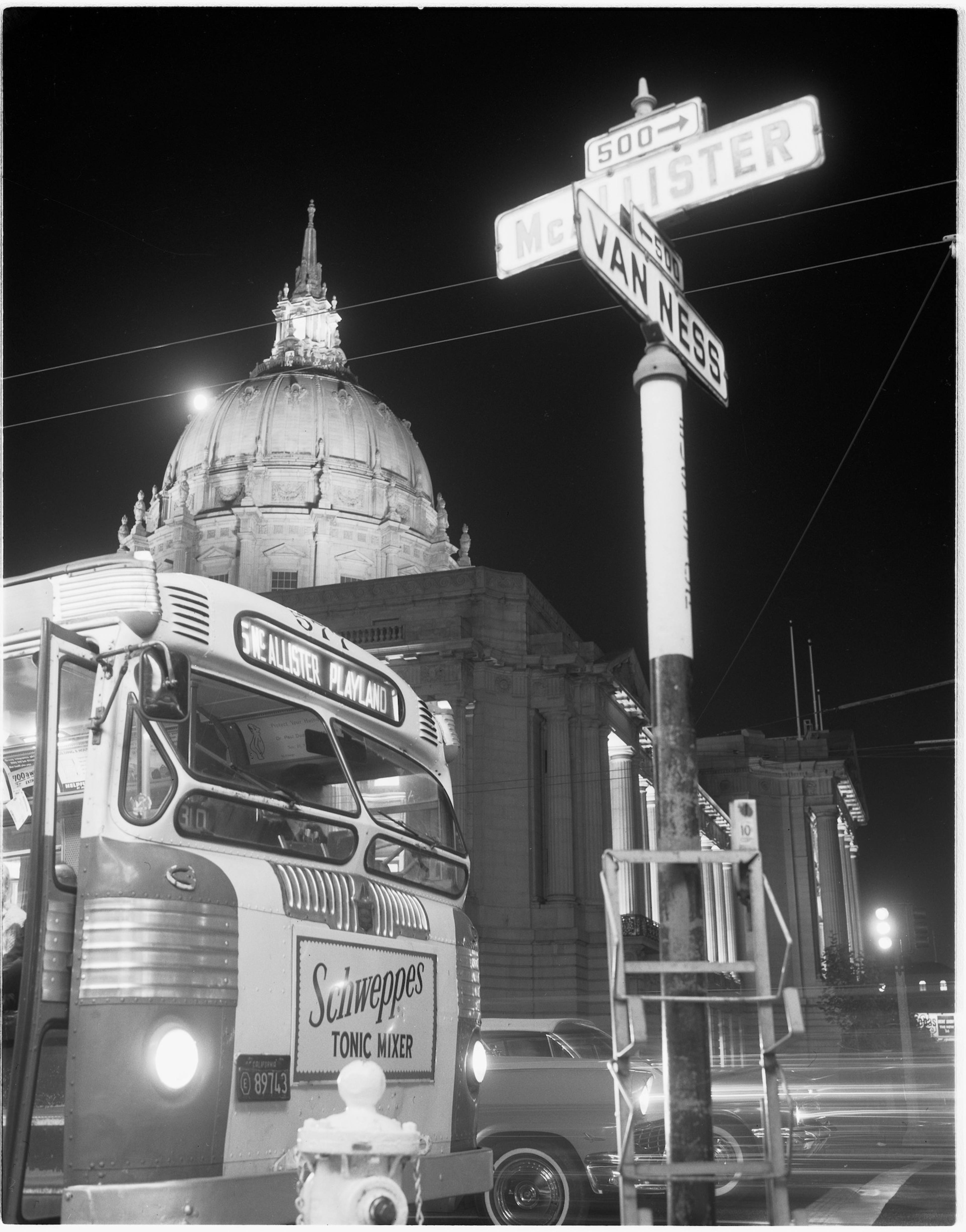
July 2019 – Resolution of Claims
As the city resolves claims (opens in new tab) with the contractor related to additional underground water and sewer work, 279 days are added to the project timeline.
September 2020 – Relief for Businesses
The city offers grants (opens in new tab) to help Van Ness businesses impacted by the construction but owners say the money is nothing compared to their losses incurred from the double whammy of the pandemic and the BRT project.
February 2021 – Underground Construction Ends
After more than three years of work, the complex utility work below street level is finally complete. The project ended up requiring replacement of the water and sewer lines as they were moved to the sides of the street, and involved greater oversight and investment from the SF Public Utilities Commission.

June 2021 – Official Cost Hits $346 Million
A Civil Grand Jury issues its report (opens in new tab)on the problem-plagued project. It cites poor planning by the city during the initial phases as the reason so many problems hit during the construction phase. At time of publication, costs hit $345.9 million, 12% greater than the original budget of $309.4 million.
October 2021 – Geary Laps Van Ness
After breaking ground in 2019, the “Geary Project” wrapped up (opens in new tab), managing to stay on budget and on time, avoiding the quagmires of the Van Ness project. Instead of creating a center bus lane, the project achieved many of the same benefits using the side lanes. The project also used plywood instead of cement, which allowed them to more easily experiment with designs and make adjustments as needed.
January 2022 – Construction Complete
The countdown to operation began with trees, landscaping, bus shelters, protective railings and art installation work well underway. The city installs LCD real-time information displays on bus shelters and begins BRT test runs on Van Ness.

April 1, 2022 – Van Ness BRT Up & Running
Four decades after one of her predecessors envisaged the route, Mayor London Breed cut the ribbon (opens in new tab) at the War Memorial Veterans Building, and the new “BRT” lines officially rolled down the new red center lanes on Van Ness. The route will stop at nine spots, deliver 32% faster bus travel times and manage an average of 52,400 weekday trips.
